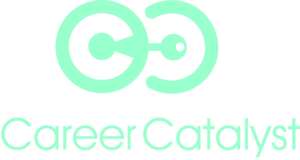Transitioning to a new career is a thrilling endeavor, offering the chance to follow your passions and embark on a fresh journey of professional growth.
However, this transition demands careful planning and strategic execution. In this blog post, we’ll embark on an in-depth exploration of navigating career transitions seamlessly, from profound self-assessment to mastering networking strategies, we’ll provide you with invaluable insights and concrete steps to ensure your transition is not only successful but also deeply rewarding.
1. Self-Assessment: Understanding Your Inner Compass
Before taking the leap, embark on a journey of self-discovery to gain a profound understanding of your strengths, aspirations, and values:
- Analyze your core skills, talents, and the tasks that genuinely ignite your enthusiasm.
- Reflect on the values that propel you forward and the kind of work environment where you truly thrive.
- Delve into your motivations for seeking a career change and articulate the goals you hope to achieve.
2. Skill Translation: Crafting a New Narrative
Transitioning to a different career often involves reframing your skills and learning new ones. Here’s how to navigate this challenge:
- Examine how your existing skills align with the demands of your new field. Emphasize the transferable skills that bridge the gap.
- Identify the specific skills you need to acquire to excel in your chosen path. Explore opportunities for upskilling and training.
- Develop a compelling narrative that showcases how your current skills can be seamlessly integrated into your new career. Craft a story that resonates with potential employer
3. Networking: Building Bridges to New Opportunities
Networking is a cornerstone of successful career transitions. Forge meaningful connections through strategic steps:
- Attend industry-related events, conferences, and seminars to immerse yourself in your desired field’s ecosystem.
- Leverage digital platforms like LinkedIn to connect with professionals who can offer insights and guidance.
- Seek informational interviews with individuals already established in your target industry. Their perspectives can provide invaluable insights and inspiration.
4. Goal-Setting: Paving Your Path with Clear Objectives
Goals are your guiding stars during a career transition. Set specific, measurable, achievable, relevant, and time-bound (SMART) objectives:
- Define the precise position or role you aspire to secure in your new career. Outline the responsibilities, challenges, and opportunities associated with it.
- Break down your transition journey into smaller milestones. These milestones will keep you motivated and enable you to measure your progress effectively.
- Set a realistic timeline for each phase of your transition, from acquiring new skills to applying for positions. Adjust your timeline as needed based on your evolving insights.
5. Embracing Lifelong Learning: Fueling Your Evolution
Transitioning careers often necessitates a commitment to ongoing learning. Embrace personal and professional growth by:
- Enroll in courses, workshops, or online programs that align with the skills required in your new field.
- Stay attuned to industry trends by attending webinars, listening to podcasts, and reading relevant books and articles.
- Engage with online communities, forums, or social media groups related to your desired industry. Participating in discussions can broaden your knowledge and perspectives.
Transitioning between career paths is a transformative journey that demands self-awareness, meticulous planning, and a growth-oriented mindset.
Through self-assessment, skill translation, strategic networking, goal-setting, and a dedication to continuous learning, you set the stage for a successful and deeply fulfilling career transition.
Remember that every step you take, every skill you acquire, and every connection you make contributes to a seamless transition that aligns with your passions and aspirations.
Your commitment and strategic approach will undoubtedly lead you to a destination of professional satisfaction and achievement.





